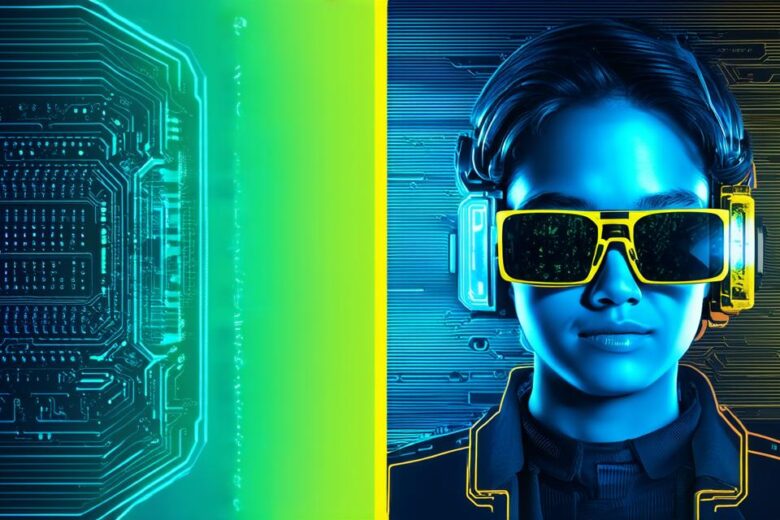Augmented reality (AR) and virtual reality (VR) are two of the most popular emerging technologies in the tech industry. While they share some similarities, there are also significant differences between the two that set them apart.
Introduction
Before diving into the specifics of what sets AR apart from VR, it’s important to understand what each technology is and how they work. Augmented reality is a technology that superimposes digital information or objects onto the real world, enhancing the user’s perception of their surroundings.
On the other hand, virtual reality is an immersive experience that creates a simulated environment for the user to interact with.
Defining Characteristics

One of the key differences between AR and VR is how they interact with the real world. AR technology allows users to see and interact with digital objects in their physical surroundings, while VR technology completely immerses the user in a simulated environment.
This means that AR can be used for a variety of practical purposes, such as assisting in surgery or enhancing the shopping experience, while VR is typically used for entertainment or gaming purposes.
Another defining characteristic of AR is its ability to blend real-world and digital elements seamlessly. AR technology uses cameras and sensors to track the user’s location and movements, allowing them to interact with digital objects in a natural way.
This means that AR can be used in a variety of industries, such as education, marketing, and entertainment, to enhance the user’s experience and provide valuable information or insights.
Virtual reality, on the other hand, creates a completely immersive environment for the user, typically using headsets or goggles to block out the real world. This means that VR experiences are often more intense and engaging than AR experiences, as the user is fully immersed in the simulated environment.
However, this also means that VR technology is typically more expensive and requires more specialized equipment than AR technology.
Use Cases
As mentioned earlier, one of the key differences between AR and VR is their use cases. Augmented reality is often used for practical purposes, such as assisting in surgery or enhancing the shopping experience.
For example, surgeons can use AR to visualize a patient’s anatomy and plan their procedure more accurately, while shoppers can use AR to see how furniture or clothing would look in their home before making a purchase.
Virtual reality, on the other hand, is often used for entertainment or gaming purposes. For example, gamers can use VR technology to immerse themselves in a fully simulated environment and interact with digital characters in a more realistic way than traditional gaming methods allow.
However, VR technology can also be used in other industries, such as education and training, to provide immersive learning experiences that are more engaging and effective than traditional classroom settings.
Future Prospects
As AR and VR technologies continue to evolve, we can expect to see even more innovative use cases emerge. For example, AR technology could be used in the automotive industry to enhance the driver’s experience by providing real-time information about road conditions, traffic, and other important data.
VR technology could also be used in the healthcare industry to provide immersive training experiences for medical professionals, allowing them to practice complex procedures in a safe and controlled environment.
